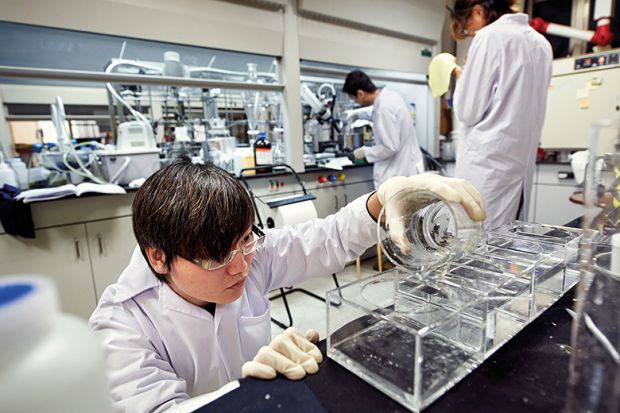Chinese universities still lag well behind their counterparts in the United States when it comes to working on research with industry, according to a new analysis, despite their dramatic ascent up global league tables since the turn of the millennium.
Weak intellectual property rights and a lack of trust between universities and businesses have been blamed for China’s relatively underdeveloped links.
Just over 6 per cent of US publications are joint efforts between the academy and industry, compared with just 2.7 per cent in China, the new research finds.
At some US universities, more than one in 10 papers are done jointly with industry but only a few institutions in China had anything near approaching this rate of engagement.
At Tsinghua University, Shanghai Jiao Tong University and Fudan University, the proportion was 4 per cent or lower.
Yuzhuo Cai, an adjunct professor at the University of Tampere in Finland and expert on innovation in China, said that he agreed that Chinese universities were “lagging” behind institutions in the US and Europe in terms of cooperation with industry.
“In the US there has been a tradition for university and business to collaborate (with higher trust between the two sectors),” he told Times Higher Education. This was boosted in 1980 with the Bayh-Dole Act in the US, which allowed universities to retain rights to innovations and gave them more of a role in patenting. “With years of practice, both sectors now have got more used to research collaboration,” he said.
But in China, there is little trust between the two sides, and neither is there an effective funding system to encourage it, he said. China’s protection of intellectual property and contracts was also “incomplete”, he added, while universities themselves often preferred to create their own enterprises to commercialise new discoveries, he said.
However, the situation may have changed in recent years as the Chinese government has stepped up efforts to improve universities’ role, said Ping Zhou, a professor at Zhejiang University and a co-author of the study, ‘University-Industry Collaboration in China and the USA: A Bibliometric Comparison’, published in Plos One, which looked at data from the years 2009-12.
China is looking to harness university research to move its economy away from low-value manufacturing and end its reliance on imported technologies (although there are critics who question whether universities can or should play a key role in economic growth).
Earlier this year, China’s president Xi Jinping urged scientists to “respond to the country’s major strategic demands” and “advance research into core technologies” as part of a broader science and technology push.
Professor Zhou also pointed out that other measures of university links with industry exist aside from joint research. Several Chinese universities scored highly in a 2015 THE measure of the money they received from industry, although none featured in a table of those whose research has commonly been cited in patents.
Register to continue
Why register?
- Registration is free and only takes a moment
- Once registered, you can read 3 articles a month
- Sign up for our newsletter
Subscribe
Or subscribe for unlimited access to:
- Unlimited access to news, views, insights & reviews
- Digital editions
- Digital access to THE’s university and college rankings analysis
Already registered or a current subscriber? Login








